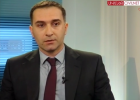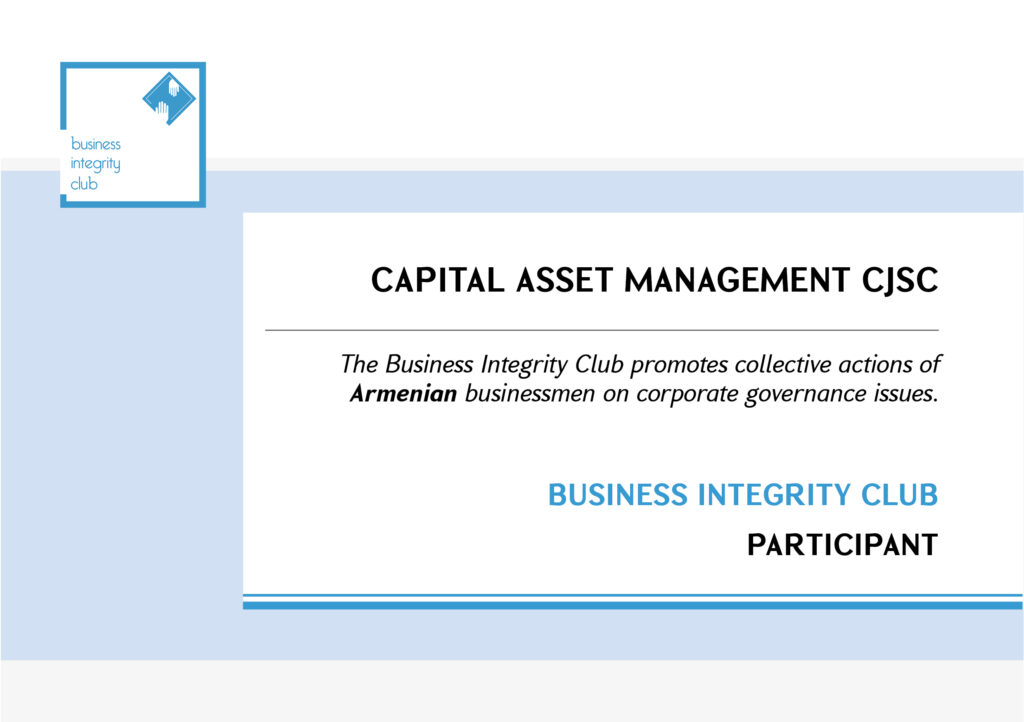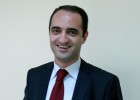A nationwide survey conducted by LearnVest and Chase Blueprint
Forbes.com (14.11.12)
11 Ways You’re Sabotaging Your Future
Retirement is one of our biggest financial challenges for three reasons:
- The sum we have to save for retirement is bigger than for any other financial goal.
- When we prioritize our desires, retirement never wins on urgency, making it easy to keep putting off.
- Saving for retirement is the financial equivalent of an ultramarathon. (Any of you run an ultramarathon, recently?) When saving to buy a house or to pay for your child’s college education, you might save for five or 15 years, but for retirement, you have to save decade over decade.
If just reading that list is making you sweat, we understand.
According to a nationwide survey conducted by LearnVest and Chase Blueprint, Americans’ number one financial worry is whether or not we’ll be able to save enough for retirement. About one-third of men and women cite that as their top concern over, for instance, paying down debt, having enough money to live comfortably and having enough to provide for their children.
As with any daunting challenges we face, we tend to think up excuses so we can avoid facing the difficult work of saving for retirement. Well, today is the day you’re going to stop.
RELATED: Americans Know They Need to Save for Retirement. So Why Aren’t They?
We’ve compiled a list of the top retirement lies we tell ourselves, and we’ve come up with solutions that will get you on the path to a comfortable nest egg.
1. I can’t afford it.
More than one in four women in the Chase/LearnVest study say they don’t have money to contribute to retirement after all the bills are paid.
Ahem. Yes, you can find $20 to get started. If you haven’t started saving for retirement, pack your lunch twice this week, and put $20 in a retirement account. (If you always pack a lunch, cut out another $20 expense this week.) Make this happen, even if you have to do it one dollar at a time over the course of the month. If you can’t think of any costs to cut, take our free 10-day Cut Your Costs bootcamp.
If your employer offers a retirement plan, set it up today and start putting at least 1% of your salary away. If you have an individual retirement account, log in and start contributing $20 more a month. If you were to contribute $20 a month for 30 years and your money grew on average 7% a year, your total contributions of $7,200 would grow to more than $24,000. Want a step-by-step guide on setting up your employer-based and individual retirement accounts? This checklist was made for you.
2. I’m so young, there is plenty of time to save for retirement later.
This is one of the most seductive retirement lies. For a good long while, it is true that retirement is a ways off. (Even if you’re 55, it’s still at least 10 years away.) Unsurprisingly, a quarter of women aged 25-32 in the Chase/LearnVest study said that retirement is so far off they have little interest in learning about it. Even 5% of women aged 45-54 still feel that way.
But time moves along faster than you think: The study also showed that 6% of women aged 45-54 had less than $5,000 saved for retirement. Those women are in a serious game of catch-up now.
Need more motivation to start today? Consider this: The longer you put off saving for retirement, the more difficult it will be for you to save.
Let’s say your goal is to save $1 million for retirement.
If you start saving for retirement when you’re 25, you’ll only have to contribute slightly less than $6,500 a year to reach that goal by the time you turn 65. Still, if you’re 25 and making $35,000 a year, $6,500 probably seems like a lot. Contributing that amount will leave you $28,500 a year to live on. Not ideal.
But if you wait until you’re 45 and making more money–let’s say, $60,000 a year–and start contributing then, you’ll have to contribute $28,185 a year to get to your retirement goal of $1 million! And that leaves you less than $32,000 a year to live on. But if you had started at 25, you would still be contributing just $6,500 a year at age 45, so you would have $53,500 a year to live on–not bad.
So, start now. (Learn more about why starting early makes it easier to save for retirement.)
3. When I get married someday I won’t have to worry about money.
(We bet all the married women reading this are having a good chuckle right now.)
Whether or not marriage makes your financial life easier or not depends on a whole host of factors: Do you both work? Do you both make enough to support yourselves? Could one or both of you get laid off? Or get sick? Will one of you stay home? Will one or both of you switch careers? Will one or both of you receive an inheritance? Are you honest with each other about your spending? Do you agree on your financial goals? Will you have children? If so, will you pay for their college educations?
Want more proof that marriage won’t relieve your retirement worries? Here’s the age breakdown of women who reported they “would probably rely on my partner in order to save for retirement” in our Chase/LearnVest study: 23% of women aged 25-32 but only 12% of women age 45-54. It appears that as women get older, they become more realistic about retirement.
Bottom line: In marriage, your money worries change, but they won’t go away (in fact, money is a huge problem in this woman’s marriage), and your main money concern–retirement–will always be there whether you get married or not.
(If that still hasn’t convinced you, keep in mind that saving for retirement is harder for women, so it’s something we, married or single, need to focus on more than men.)
4. I’m counting on Social Security, so I don’t need to save that much.
Maybe today’s retirees can say this. But the future of Social Security is so uncertain that anyone retiring in the coming years should not plan to rely on it. Why? The amount of money going into the program is not enough to give everyone the benefits they’ve been promised. Thankfully, the Chase/LearnVest study shows that seven in ten women are not confident that they will receive Social Security. But if you are one of the three in ten that believes you will, listen up:
If you’re 25 now, and you earn a hefty $115,000 a year now, you can expect to receive only about $3,231 a month in today’s dollars ($38,772 a year) if you retire in 2051 at age 70. Of course, this is the best-case scenario. If you’re 25 and earn $35,000 a year (much more likely), you can expect to only get $977 a month ($11,712 a year) if you retire at 62. That’s poverty-level income.
5. I deserve to have fun with my money today–I work hard for it.
Saving for retirement is not an either/or proposition. You can save for retirement and enjoy life now. Here’s how: the 50/20/30 Rule. This budgeting guideline says that:
- No more than 50% of your take-home pay should go toward your Essential Expenses, which include housing, transportation, groceries and utilities.
- At least 20% of your take-home pay should go to Financial Priorities, which include retirement contributions, savings contributions and debt payments. (Plus, if your employer offers a retirement plan, such as a 401(k) or a 403(b), you should be be contributing additional money toward retirement before your paycheck hits your bank account.)
- Lastly, no more than 30% of your take-home pay should go toward your Lifestyle Choices, which covers the fun you can have today: shopping, entertainment, personal care, the gym, gifts and more.
So, yes, you do deserve to have fun with your money today–just not at the expense of tomorrow. (Learn more about the 50/20/30 Rule.)
6. A big inheritance is coming my way someday.
This is a case of counting chickens before they hatch. The inheritance you feel sure to collect could be devoured by medical bills, it could dwindle away in another financial crisis, or you could find the wealthy relative you expected to inherit from is living far longer than you expected. You may also end up needing that money to pay off debts or taxes. While it certainly would be nice if you inherit money and you could put all of it toward your retirement, thinking you can do so is not a plan; it’s a gamble.
It’s better to rely on yourself to fund your retirement and then to enjoy your inheritance as a bonus if you do indeed receive one.
7. I’ll be able to use the equity in my home to retire on.
This retirement lie raises two big questions: Where will you live in retirement? And what if the market is down when you want to sell?
Okay, we’ve got a third question: Remember the housing crisis a few years ago?
8. I need to get my kids through college first and then I can focus on my retirement.
Yes, college is a big expense, and you should definitely save for it. But if you don’t save the full amount for college, you can always fall back on financial aid. Grants, scholarships and student loans can help pay your child’s way. (Learn here how best to save for your child’s college education and learn to open a college savings account with this checklist.)
When it comes to your retirement, however, there are no loans. All you’ll have to live on is what you’ve saved. For that reason, saving for retirement should be your top financial priority–always. Any leftover money you have can go toward college savings. (Find out here how to prioritize retirement against your other financial goals.)
9. I am going to lose money so why invest it in a 401(k) or IRA?
Yes, the market is not reliable from year to year. But, historically, over long periods of time, it has returned about a 7% annual return on investments. You’re not going to get that with a savings account–and, in fact, you won’t even beat inflation if you stash your money in a savings account.
10. I’ll start saving when the market improves.
No one can predict the market. No one. So you cannot time your investments perfectly so that they only ever go up. But if you invest regularly over decades, your investments, like the general stock market has done historically, should experience more ups than downs. So, invest for the long haul, and don’t fret over minor dips now. If you do, you’ll be missing out on amassing tens of thousands of dollars later.
11. I plan to keep working even during retirement.
According to the Chase/LearnVest study, 17% of women believe they can do this (as do 14% of men). You may love your work, and it may be the kind of work you can do even when you’re less spry. But what if you can’t find work, or what if you have health problems that prevent you from working?
While you can hope for a best-case scenario, it isn’t wise to base your plan around one. Sock away some money now so you’re ready for whatever may come your way. Even if you’re healthy enough to work past the typical retirement age, you’ll probably want a vacation now and then!
No More Excuses
If you’re fully convinced to let go of all these retirement lies, take our Retiring in Style Bootcamp. In ten days, you’ll visualize your future retirement, learn what accounts you need, find out the total amount you need to save and more.
Source : http://www.forbes.com/sites/learnvest/2012/11/14/11-ways-youre-sabotaging-your-future/










 PALM project has been USAIDs’ primary activity aimed to support Armenia’s pension reform implementation, strengthen the retirement income system, and enhance the competitiveness of the labor market. Between 2009-2012, PALM assisted the Government of Armenia, individuals, households, and vulnerable communities to better manage social risks, such as old age, disability, and unemployment. The project provided technical assistance to the Armenian government to build the foundation for the multi-pillar pension system that will come into force in January 2014. The new pension system will provide each citizen of Armenia with a possibility to improve their financial security in old age through diversifying the sources of income, including making retirement savings in a private pension fund – a concept that is new to Armenia.
PALM project has been USAIDs’ primary activity aimed to support Armenia’s pension reform implementation, strengthen the retirement income system, and enhance the competitiveness of the labor market. Between 2009-2012, PALM assisted the Government of Armenia, individuals, households, and vulnerable communities to better manage social risks, such as old age, disability, and unemployment. The project provided technical assistance to the Armenian government to build the foundation for the multi-pillar pension system that will come into force in January 2014. The new pension system will provide each citizen of Armenia with a possibility to improve their financial security in old age through diversifying the sources of income, including making retirement savings in a private pension fund – a concept that is new to Armenia.